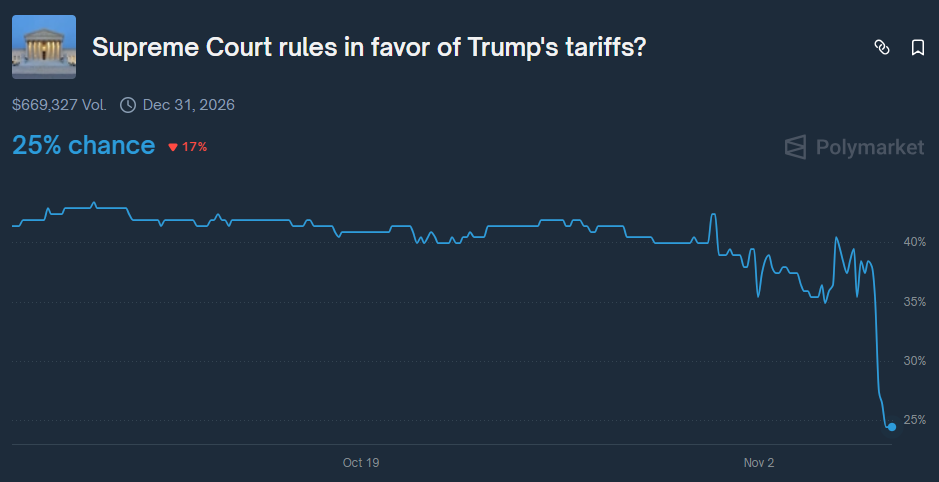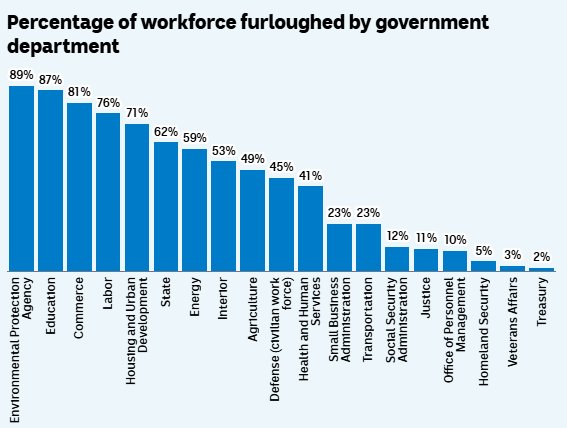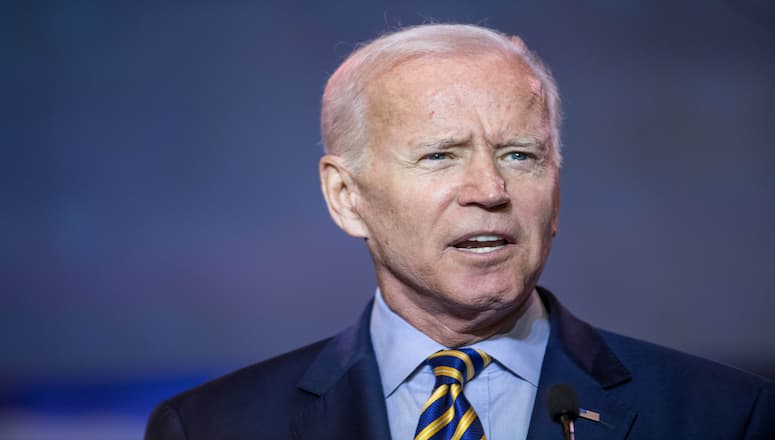Notícias de mercado & insights
Mantenha-se à frente dos mercados com insights de especialistas, notícias e análise técnica para orientar suas decisões de negociação.

Artificial intelligence stocks have begun to waver slightly, experiencing a selloff period in the first week of this month. The Nasdaq has fallen approximately 2%, wiping out around $500 billion in market value from top technology companies.

Palantir Technologies dropped nearly 8% despite beating Wall Street estimates and issuing strong guidance, highlighting growing investor concerns about stretched valuations in the AI sector.
Nvidia shares also fell roughly 4%, while the broader selloff extended to Asian markets, which experienced some of their sharpest declines since April.
Wall Street executives, including Morgan Stanley CEO Ted Pick and Goldman Sachs CEO David Solomon, warned of potential 10-20% drawdowns in equity markets over the coming year.
And Michael Burry, famous for predicting the 2008 housing crisis, recently revealed his $1.1 billion bet against both Nvidia and Palantir, further pushing the narrative that the AI rally may be overextended.
As we near 2026, the sentiment around AI is seemingly starting to shift, with investors beginning to seek evidence of tangible returns on the massive investments flowing into AI, rather than simply betting on future potential.
However, despite the recent turbulence, many are simply characterising this pullback as "healthy" profit-taking rather than a fundamental reassessment of AI's value.
Supreme Court Raises Doubts About Trump’s Tariffs
The US Supreme Court heard arguments overnight on the legality of President Donald Trump's "liberation day" tariffs, with judges from both sides of the political spectrum expressing scepticism about the presidential authority being claimed.
Trump has relied on a 1970s-era emergency law, the International Emergency Economic Powers Act (IEEPA), to impose sweeping tariffs on goods imported into the US.
At the centre of the case are two core questions: whether the IEEPA authorises these sweeping tariffs, and if so, whether Trump’s implementation is constitutional.
Chief Justice John Roberts and Justice Amy Coney Barrett indicated they may be inclined to strike down or curb the majority of the tariffs, while Justice Brett Kavanaugh questioned why no president before Trump had used this authority.
Prediction markets saw the probability of the court upholding the tariffs drop from 40% to 25% after the hearing.

The US government has collected $151 billion from customs duties in the second half of 2025 alone, a nearly 300% increase over the same period in 2024.
Should the court rule against the tariffs, potential refunds could reach approximately $100 billion.
The court has not indicated a date on which it will issue its final ruling, though the Trump administration has requested an expedited decision.
Shutdown Becomes Longest in US History
The US government shutdown entered its 36th day today, officially becoming the longest in history. It surpasses the previous 35-day record set during Trump's first term from December 2018 to January 2019.
The Senate has failed 14 times to advance spending legislation, falling short of the 60-vote supermajority by five votes in the most recent vote.
So far, approximately 670,000 federal employees have been furloughed, and 730,000 are currently working without pay. Over 1.3 million active-duty military personnel and 750,000 National Guard and reserve personnel are also working unpaid.

SNAP food stamp benefits ran out of funding on November 1 — something 42 million Americans rely on weekly. However, the Trump administration has committed to partial payments to subsidise the benefits, though delivery could take several weeks.
Flight disruptions have affected 3.2 million passengers, with staffing shortages hitting more than half of the nation's 30 major airports. Nearly 80% of New York's air traffic controllers are absent.
From a market perspective, each week of shutdown reduces GDP by approximately 0.1%. The Congressional Budget Office estimates the total cost of the shutdown will be between $7 billion and $14 billion, with the higher figure assuming an eight-week duration.
Consumer spending could drop by $30 billion if the eight-week duration is reached, according to White House economists, with potential GDP impacts of up to 2 percentage points total.


The Walt Disney Company (NYSE: DIS) reported the latest financial results for the fourth quarter and fiscal year ended October 1, 2022, after the closing bell in the US on Tuesday. The biggest entertainment company in the world missed both revenue and earnings per share estimates (EPS) for the quarter. The company reported revenue of $20.15 billion for the quarter (up by 9% year-over-year) vs. the $21.268 billion estimate.
EPS reported at $0.30 per share (down by 19% year-over-year) vs. the $0.558 per share expected. Revenue reached $82.722 billion for the fiscal year that ended October 1, 2022 – up 23% from the previous year. EPS reported at $3.53% per share, up by 54% from 2021. ''2022 was a strong year for Disney, with some of our best storytelling yet, record results at our Parks, Experiences and Products segment, and outstanding subscriber growth at our direct-to-consumer services, which added nearly 57 million subscriptions this year for a total of more than 235 million,'' Bob Chapek, CEO of Disney said in a press release. ''Our fourth quarter saw strong subscription growth with the addition of 14.6 million total subscriptions, including 12.1 million Disney+ subscribers.
The rapid growth of Disney+ in just three years since launch is a direct result of our strategic decision to invest heavily in creating incredible content and rolling out the service internationally, and we expect our DTC operating losses to narrow going forward and that Disney+ will still achieve profitability in fiscal 2024, assuming we do not see a meaningful shift in the economic climate. By realigning our costs and realizing the benefits of price increases and our Disney+ ad-supported tier coming December 8, we believe we will be on the path to achieve a profitable streaming business that will drive continued growth and generate shareholder value long into the future. And as we embark on Disney’s second century in 2023, I am filled with optimism that this iconic company’s best days still lie ahead,'' Chapek added.
Shares of Disney were little changed at the end of the day on Tuesday, down by 0.53% at $99.94 a share. The stock fell by around 9% in the after-hours trading after missing Wall Street estimates for the previous quarter. Stock performance 1 month: +7.30% 3 months: -7.61% Year-to-date: -35.50% 1 year: -42.95% Walt Disney price targets Keybanc: $143 UBS: $135 Rosenblatt: $134 JP Morgan: $145 B of A Securities: $127 Arete Research: $263 Credit Suisse: $157 Wells Fargo: $145 Goldman Sachs: $140 Walt Disney is the 50 th largest company in the world with a market cap of $182.12 billion.
You can trade The Walt Disney Company (NYSE:DIS) and many other stocks from the NYSE, NASDAQ, HKEX, ASX, LSE and DE with GO Markets as a Share CFD. Sources: The Walt Disney Company, TradingView, Benzinga, CompaniesMarketCap


Bitcoin has dropped dramatically over the last 24 hours to its lowest level for the year after fears were sparked that major player FTX faced a liquidity crisis. In the last two years cryptocurrency has become available to large institutions and funds which has increased the overall size of the market. However, at the same time it has made it vulnerable to large liquidity events such as the one that is occurring now.
The reason for the large drop-off was the news that exchange FTX was facing serious liquidity issues after a large drop in the price of Bitcoin and other cryptocurrencies this year. Subsequently almost as an act of mercy, Binance the world’s largest cryptocurrency exchange has proposed that it will buy out FTX and its subsidiaries to stabilise the market. In addition, fears over customers’ ability to withdraw their funds from accounts were abounds on Tuesday.
This is not the first-time withdrawal issues have hurt the sector with frozen accounts being an issue when Celsius was facing difficulties. This run has seen the price of Bitcoin fall sharply to its lowest levels since November 2020. The price dumped about USD 2000 as the news hit the market.
The price then bounced of the USD 17,000 level to where it now rests near in the mid USD 18,000’s. The volume sold was the highest level since June 2022. Importantly, the price continues to hold its longer term range indicating some level of strength at the USD 18,000 level.
There is still a fair bit to play out regarding this potential merger. A failed deal or an accelerated acquisition could either help or hinder the price of Bitcoin and other cryptocurrencies.


In recent days and weeks there have been rumours that China is beginning to consider an easing of its Covid restrictions. As virtually the last country with extreme Covid restrictions, a shift in policy from China would be a major catalyst for the global markets and economy. Whilst the CCP has not yet announced any actual easing, there are hopes that they will soon begin to ease off on some of their measures.
Health officials have stated that local governments should not “double down” on restrictions and allow people’s livelihoods and economic activity to remain normal even in the face of increasing covid cases. General activity has shown an increase in flights and covid vaccine uptake across the country which may signal a move towards ending restrictions. Impact on the markets The country is set to have one of its worst years of growth in the last 20 years as it deals with the prolonged restrictions.
The Shanghai Stock Exchange has fallen by more than 17% and the Yuan has depreciated almost 17% against the USD. This is in the wake of global inflation and recessionary pressures. A strong China is a very good thing for the global economy, especially with regards to growth economies.
Once restrictions do ease, it is expected that Chinese stocks will rally heavily. However, it is not just Chinese stocks that will receive a boost. Australian mining companies and the AUD will likely benefit as China is a large importer of Australian resources.
It may also weaken the USD as money flows back into riskier assets and away from the greenback as the general economy begins to accelerate again. Ultimately, regardless of when exactly, China decides to ease its restrictions it would be prudent to be aware of the potential ramifications as it may provide a strong boost to the equities market and on some aspects of the foreign exchange market as well.


BioNTech SE (NASDAQ:BNTX) reported its third quarter financial results on Monday. The German pharmaceutical company beat both revenue and earnings per share (EPS) estimates for the quarter, sending the stock price higher. The company reported revenue of $3.392 billion vs. $2.024 billion expected.
EPS reported at $6.841 per share vs. $3.352 per share estimate. ''Thanks to our strong execution in the third quarter of 2022, we updated our COVID-19 vaccine revenue guidance for the year 2022 to the upper end of the original range. We started shipments of our Omicron-adapted bivalent vaccines early in September and we expect to carry on with our deliveries throughout the fourth quarter of 2022,'' Jens Holstein, CFO of BioNTech commented on the latest results. ''We believe in the potential of our COVID-19 franchise and plan to build on our leading position with ongoing innovations in this field. The power of our scientific innovation combined with our strong financial position allows us to accelerate and expand our diversified clinical pipeline and to create future growth in the interest of all stakeholders,'' Holstein concluded.
The stock was up by around 2% during the session on Monday following the latest results, trading at $155.52 a share. Stock performance 1 month: +16.38% 3 months: -7.00% Year-to-date: -38.93% 1 year: -35.10% BioNTech price targets JPMorgan: $132 Deutsche Bank: $250 HC Wainwright & Co.: $272 SVB Leerink: $224 Morgan Stanley: $194 Goldman Sachs: $206 BioNTech SE is the 411 th largest company in the world with a market cap of $38.46 billion. You can trade BioNTech SE (NASDAQ:BNTX) and many other stocks from the NYSE, NASDAQ, HKEX, ASX, LSE and DE with GO Markets as a Share CFD.
Sources: BioNTech SE, TradingView, Benzinga, CompaniesMarketCap


The AUDNZD pair has seen a large drop in the last few weeks and months as the Reserve Bank of Australia has brought about softer interest rate changes then compared to many other countries. Most other countries have dealt with inflation by raising interest rates aggressively. However, the AUD has been the victim of the RBA’s softer stance.
The last two interest rate rises have only been 25 bps hikes which is less aggressive than England and the USA where both increased rates by 75 basis point it has weakened the Australian dollar. Technical Analysis The AUDNZD has been in a long-term range between 1.00 and 1.15 since 2015. As it can be seen on the weekly chart, the pair has fallen from the top of its range which it reached in early October.
Since then, the price has fallen 5.37%. Both Australia and New Zealand are very similar geographical, political, and how they react to macroeconomic events. Therefore, the currencies are quite similar in how they are seen and act.
When assets trade in this range pattern, they often revert to the mean. This means they move back to some long-term average. On the weekly chart the price has fallen all the way back to the 50-week moving average which is an important support level.
It is almost right in the middle of the long-term range which can be seen as a long-term average. The chart is quite choppy and can make for difficult trading. Although, due to the aggressiveness of the selloff it may indicate either a short-term bounce is imminent or a longer-term reversal may occur, if the price approaches 1.00.
Ultimately both currencies are risk on currencies and whilst they tend to move quite closely, the softer approach to interest rate hikes that the RBA has taken so far has seen it perform worse than the NZD. If the RBA decides to become more aggressive with their rate hikes, the price may move back towards the top of the range.


The US midterm elections are coming up next week on 8 November and have the potential to have a big say on the direction and volatility of the US and global markets. All the 435 seats in the House of representatives will be decided upon. Currently, the makeup of the house includes 220 Democrats, 212 republicans and 3 vacant seats.
The senate is just as intriguing with the senate essentially split 50 – 50, with the Democrats having the support of 2 independents. This means that Vice President, Kamala Harris has the deciding opinion on bills that get put forward. It also means that the Republicans only need one more seat to take control of the senate.
This is crucial because it means if the Republicans take control, then bills put forward by Democrats will face a much tougher road to turn into law. It is also possible that the Republicans could take both the senate and the house of representatives which would make it almost impossible for the Democrats and Joe Biden to pass any legislation. Impact on the Markets When US elections occur, there tends to be a decrease in performance before the election and increase in volatility around the US markets.
After the election there is usually a period of growth for equities. The issue at the forefront of all American’s minds is still inflation and the new government will deal with it. A major impact on the economy may be the government’s ability to deal with issues surrounding the economy such as inflation, a recession, or other fiscal matters.
For instance, a gridlocked congress will restrict the President’s ability come up with policies that the Republicans will ok. The president may have to resort to using Executive orders which are more limited in scope and done without support of congress. More responsibility might be taken by the Federal Reserve to loosen monetary policy to fight a potential recession without fiscal support.
This bodes well for the equities market and dampen some of the strength of the US dollar. From a more ideological perspective, Biden’s push for environmental and sustainability reform. Biden and the democrats have pushed forward policies that have supported these developments.
Therefore, money flow away from these sectors if that support gets pushed away. Ultimately, the midterm elections will likely have some effect on both the direction and volatility of the market. A swing towards the Republicans may see a shift in volatility and sentiment across the economy.

